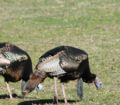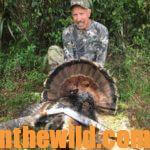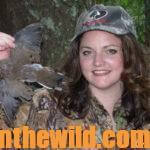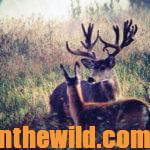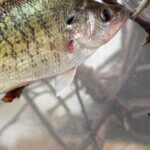Editor’s Note: Longtime turkey hunter, Alex Rutledge of Birch Tree, Missouri, has hosted outdoor TV and radio shows and spends many days in turkey woods each spring.
 One of the toughest turkeys of the entire hunt is the gobbler that you’ve shot at and missed, or the gobbler that someone else has shot at and missed. To take this bird, you have to pay attention to what you’re doing, realize what’s happened before and after the shot, and understand where you think the turkey has gone after you’ve pulled the trigger, and he hasn’t fallen over dead.
One of the toughest turkeys of the entire hunt is the gobbler that you’ve shot at and missed, or the gobbler that someone else has shot at and missed. To take this bird, you have to pay attention to what you’re doing, realize what’s happened before and after the shot, and understand where you think the turkey has gone after you’ve pulled the trigger, and he hasn’t fallen over dead.
You have to ask yourself:
* Did the turkey gobble often as he came in to your calling?
* Was the turkey a 2-year old gobbler or a 5- or a 6-year old gobbler?
* Did the tom run off or fly off?
* Do you know in what direction he went?
* Did he have hens with him?
Answering all these questions can be the key to your taking that turkey the same day you’ve missed him or your planning on hunting him another day. There’s one thing for sure. You probably won’t call that turkey back to the same spot. Remember, I said probably not. I know people who have called a turkey back to the same place, but normally that doesn’t happen. If that’s the only turkey you have to hunt, sit where you are for 30 to 45 minutes, don’t call, and listen to see if that turkey will start gobbling again.
 Once you’ve located where that turkey is, then ease away from the place where you’ve been sitting and circle around. Don’t get in front of him, but try to move toward him from the side. I’ll start walking toward him, while making three, soft, coarse yelps. If the turkey gobbles back to me, then I know I have a good chance to take him. If I can get that turkey to start gobbling good and answering me, instead of going straight to that turkey, I’ll turn to my right or left and begin walking parallel to him, still calling softly as I’m walking. If that gobbler thinks I’m walking away from him, and I can determine that he’s gobbling while coming to me, all I have to do is find a shady spot where my Mossy Oak (www.mossyoak.com) camouflage fits into the background, sit next to a tree that’s bigger than my shoulders, yelp a few times, put my shotgun on my knee and then look for that red or white head of the gobbler as he comes toward me. He may come in gobbling, or he may come in silent, but he remembers where I’ve called from last. He’s forgotten about being shot at earlier in the morning, and he’s coming to find me with breeding on his mind. When that turkey can’t see me, but I can see him due to my wearing Mossy Oak camouflage from head to toe, then once he gets within range, I’ll squeeze the trigger on my shotgun (aiming much better this time) and give that turkey a free ride in the back of my truck to my house.
Once you’ve located where that turkey is, then ease away from the place where you’ve been sitting and circle around. Don’t get in front of him, but try to move toward him from the side. I’ll start walking toward him, while making three, soft, coarse yelps. If the turkey gobbles back to me, then I know I have a good chance to take him. If I can get that turkey to start gobbling good and answering me, instead of going straight to that turkey, I’ll turn to my right or left and begin walking parallel to him, still calling softly as I’m walking. If that gobbler thinks I’m walking away from him, and I can determine that he’s gobbling while coming to me, all I have to do is find a shady spot where my Mossy Oak (www.mossyoak.com) camouflage fits into the background, sit next to a tree that’s bigger than my shoulders, yelp a few times, put my shotgun on my knee and then look for that red or white head of the gobbler as he comes toward me. He may come in gobbling, or he may come in silent, but he remembers where I’ve called from last. He’s forgotten about being shot at earlier in the morning, and he’s coming to find me with breeding on his mind. When that turkey can’t see me, but I can see him due to my wearing Mossy Oak camouflage from head to toe, then once he gets within range, I’ll squeeze the trigger on my shotgun (aiming much better this time) and give that turkey a free ride in the back of my truck to my house.
 To learn more about turkey hunting, check out John E. Phillips’ print, Audible and Kindle turkey books at https://johninthewild.com/books/#turkey. For a free copy of John E. Phillips’ “The Turkey Gobbler Getter Manual,” go to https://johninthewild.com/free-books/.
To learn more about turkey hunting, check out John E. Phillips’ print, Audible and Kindle turkey books at https://johninthewild.com/books/#turkey. For a free copy of John E. Phillips’ “The Turkey Gobbler Getter Manual,” go to https://johninthewild.com/free-books/.


